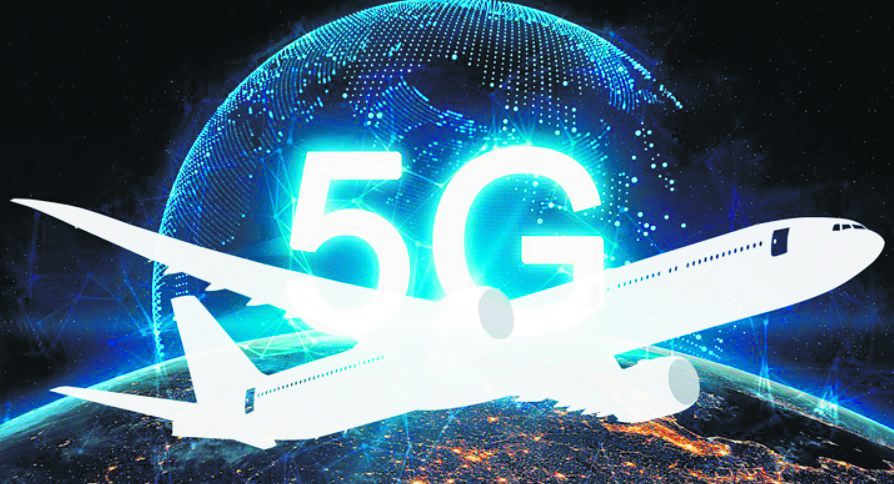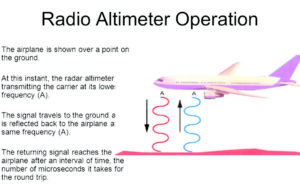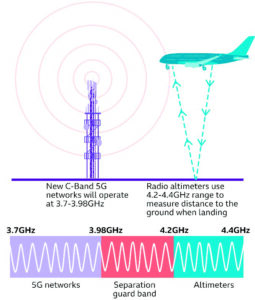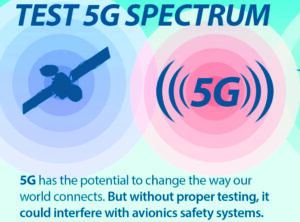
The government said it has not conducted any study to assess the effects of the 5G network on airline services in the country but the 5G C-band spectrum has the likelihood of interfering with the current radio altimeters installed on the aircraft. Aviation regulator DGCA has reviewed the studies/actions undertaken by various countries during the launch of 5G on the potential interference of 5G C-band signals on radio altimeters installed on the aircraft and risk involved in air travel.

Minister of State for Civil Aviation VK Singh informed the Lok Sabha that a review of such by the Directorate General of Civil Aviation (DGCA) has shown that there is a likelihood of interference in the functioning of the planes’ radio altimeters due to 5G signals.

In a written reply, Singh said the 5G C-band spectrum has the likelihood of interfering with the current radio altimeters installed on the aircraft. “In order to minimise the interference, manufacturers of radio altimeters are working on developing modified radio altimeters,” he said.
He also said that the world over, mitigation measures have been adopted, and similar mitigation measures have been mandated in India and accordingly, telecommunication service providers (TSPs) have been advised to take certain measures while placing 5G towers in the vicinity of airports.
The steps include establishing safety and buffer zones in the vicinity of airports, restricting power levels of C-Band 5G transmissions around the airports, and tilting 5G base stations to an extent such that the 5G emissions do not interfere with radio altimeters. To a query on whether the government has conducted any study to assess the effects of the 5G network on airline services in the country, the minister replied in the negative.

“India is neither the state of design nor the state of manufacture of aircraft/systems/items of equipment operating in the country. Therefore, the Directorate General of Civil Aviation (DGCA) does not have the design details of the aircraft/ equipment and is not in a position to conduct any studies on the potential effect of 5G signals on safe aircraft operations,” Singh said.
However, he said, the DGCA has reviewed the studies/ actions undertaken by various countries during the launch of 5G on the potential interference of 5G C-band signals on radio altimeters installed on the aircraft and the risk involved in air travel.
“The above review has shown that there is a likelihood of interference in the functioning of radio altimeter installed on aircraft due to C-band 5G signals, which can affect vital aircraft systems and can lead to unsafe aircraft operations, especially during the landing phase,” he added.
Telecom service providers have been advised to take various measures, including establishing safety and buffer zones, while placing 5G towers in the vicinity of airports to minimise interference of 5G services in aircraft operations, the government said.
In order to minimise the interference, the Telecom Service Providers (TSP) have been advised to take various measures while placing 5G towers in the vicinity of airports. They have been advised to establish safety and buffer zones in the vicinity of airports, restricting power levels of C-Band 5G transmissions around the airports, and ensure the tilt of 5G base stations to an extent such that the 5G emissions do not interfere with radio altimeters.
What is 5G?
5G is the fifth generation of wireless cellular technology, offering higher upload and download speeds, more consistent connections, and improved capacity than previous networks. 5G is much faster and more reliable than the currently popular 4G networks and has the potential to transform the way we use the internet to access applications, social networks, and information. For example, technologies like self-driving cars, advanced gaming applications, and live streaming media that require very reliable, high-speed data connections are set to benefit greatly from 5G connectivity.
Why is 5G important?
The demand for internet access, combined with the emergence of new technologies such as artificial intelligence, the Internet of Things (IoT), and automation, is driving a massive increase in the amount of data created. Data creation is growing exponentially, with volumes set to increase by several hundred zettabytes over the coming decade. The current mobile infrastructure was not designed for such a high information load and requires upgrading.
At the same time, with its high speed, massive capacity, and low latency, 5G could help to support and scale several applications like cloud-connected traffic control, drone delivery, video chatting, and console-quality gaming on the go. From global payments and emergency response to distance education and mobile workforce, the benefits and applications of 5G are limitless. It has the potential to transform the world of work, the global economy, and people’s lives.
5G Interference into Radio Altimeters is a Global Proble
The Problem and Impacts
Radar Altimeter Background and History















